Abstract
Silicon carbide is produced by heating a mixture of petroleum coke and silica sand to approximately 2000 degrees C in an electric furnace for 36 hours. During heating, large amounts of carbon monoxide are released, sulphur dioxide is produced from residual sulphur in the coke, and hydrocarbon fume is produced by pyrolysis of the coke. Loading and unloading furnaces causes exposures to respirable dust containing crystalline silica, silicon carbide, and hydrocarbons. In the autumn of 1980 extensive measurements were made of personal exposures to air contaminants. Eight hour time weighted exposures to sulphur dioxide ranged from less than 0.1 ppm to 1.5 ppm and respirable participate exposures ranged from 0.01 mg/m3 to 9.0 mg/m3. Geometric mean particulate exposures for jobs ranged from 0.1 mg/m3 to 1.46 mg/m3. The particulate contained varying amounts of alpha-quartz, ranging from less than 1% to 17%, and most quartz exposures were substantially below the threshold limit value of 100 micrograms/m3. Only traces of cristobalite (less than 1%) were found in the particulate. Median exposures to air contaminants in each job were estimated. Since the operations at the plant had been stable over the past 30 years, it was possible to estimate long term exposures of workers to sulphur dioxide, respirable particulate, quartz, total inorganic material, and extractable organic material. Cumulative exposure (average concentration times exposure duration) for each of the air contaminants was estimated for each worker using his job history. There was sufficient independent variability in the sulphur dioxide and respirable particulate cumulative exposures to make an assessment of their independent effects feasible. The theoretical basis for using the cumulative exposure index and its shortcomings for epidemiological applications were presented.
Full text
PDF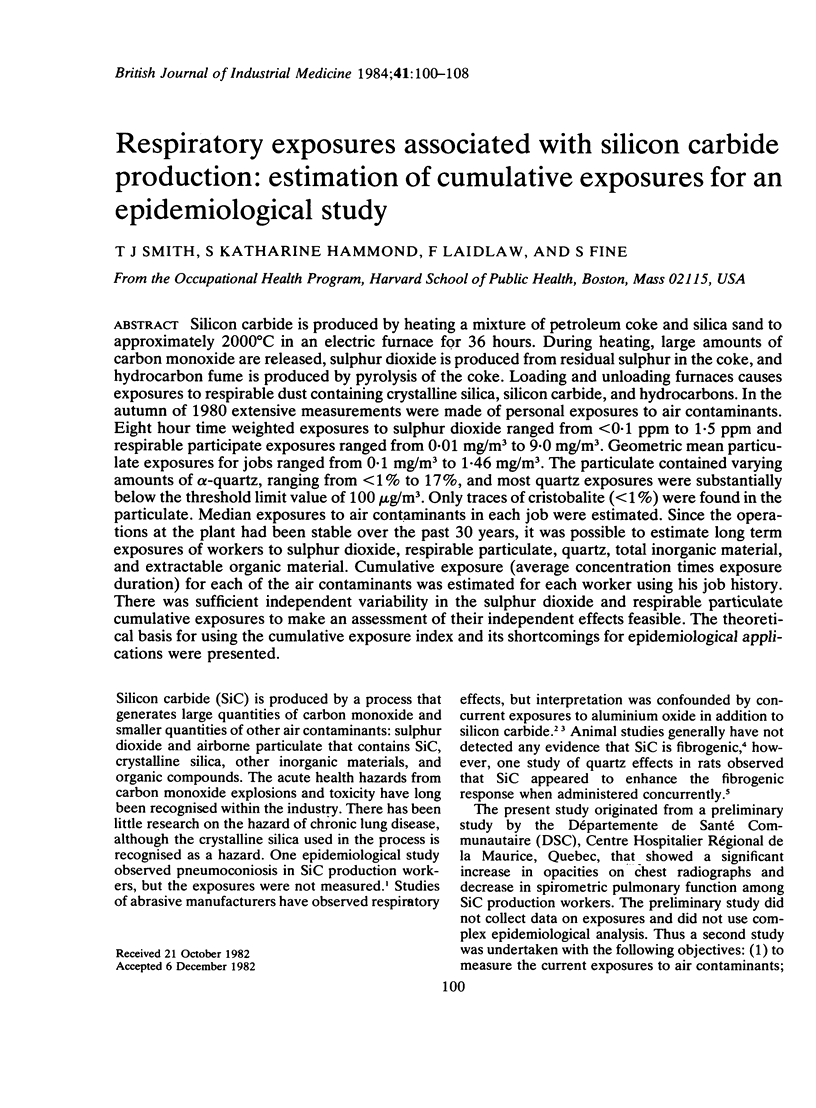

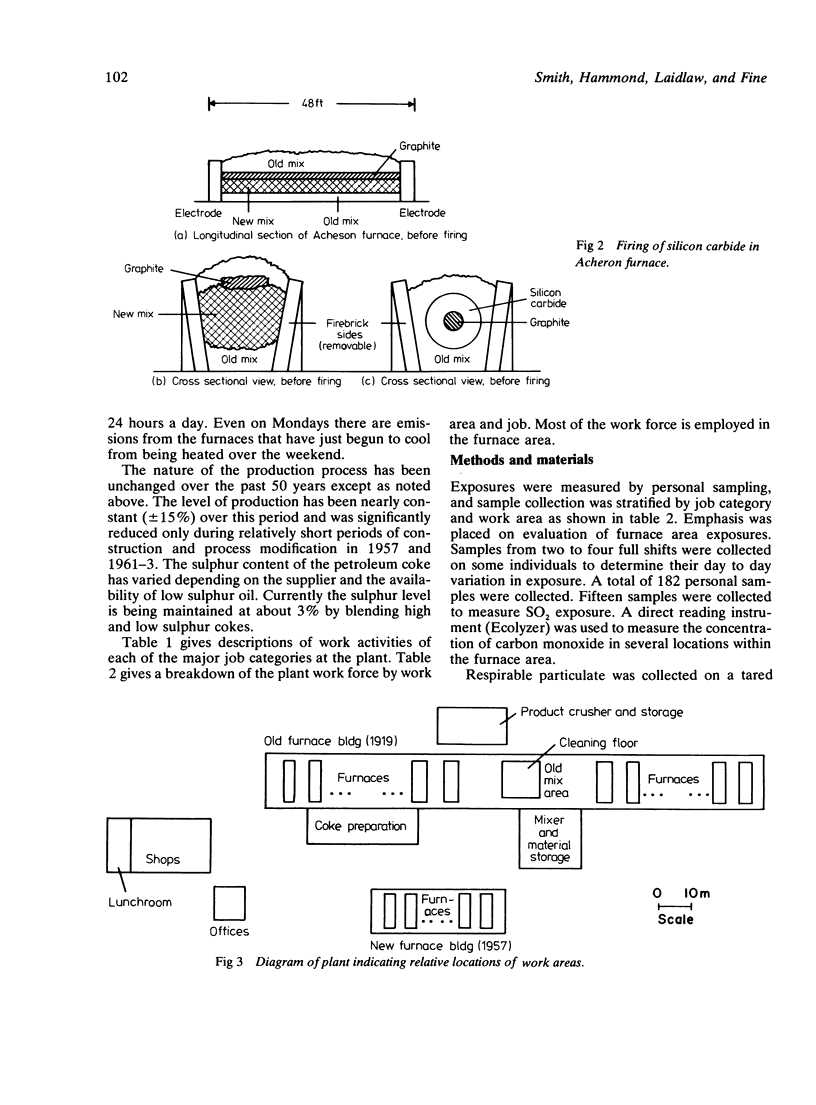


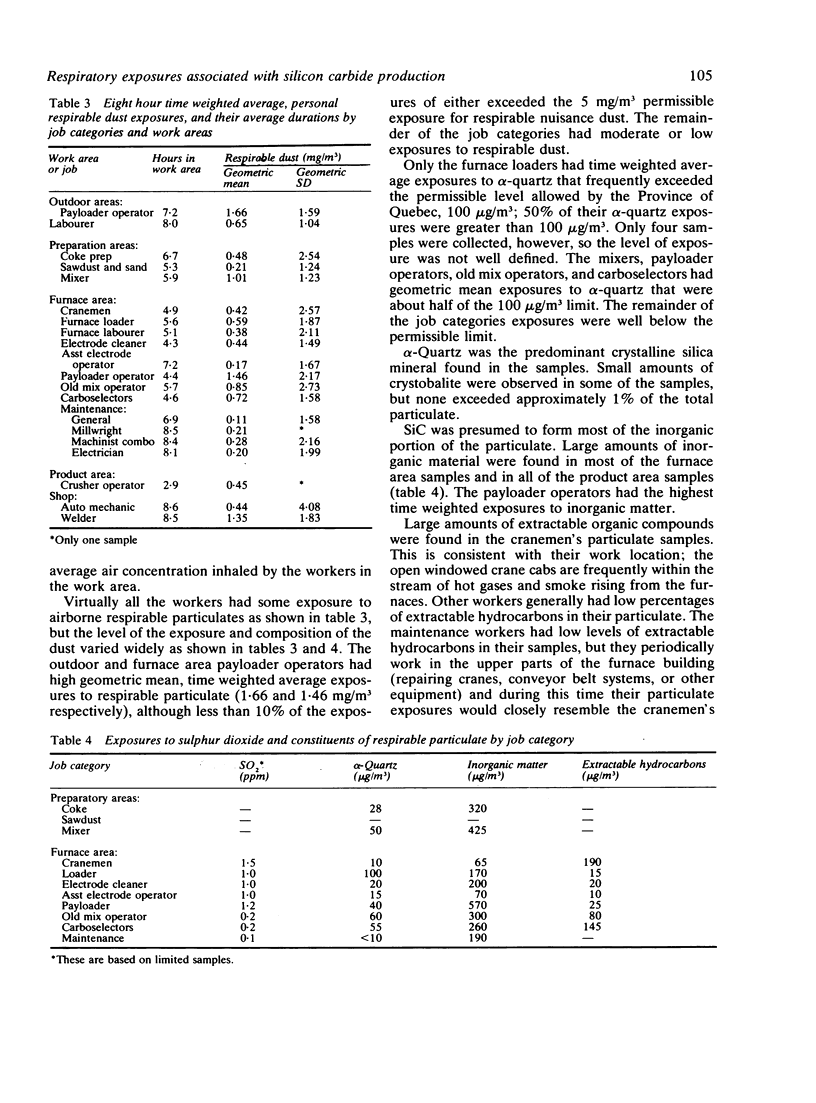
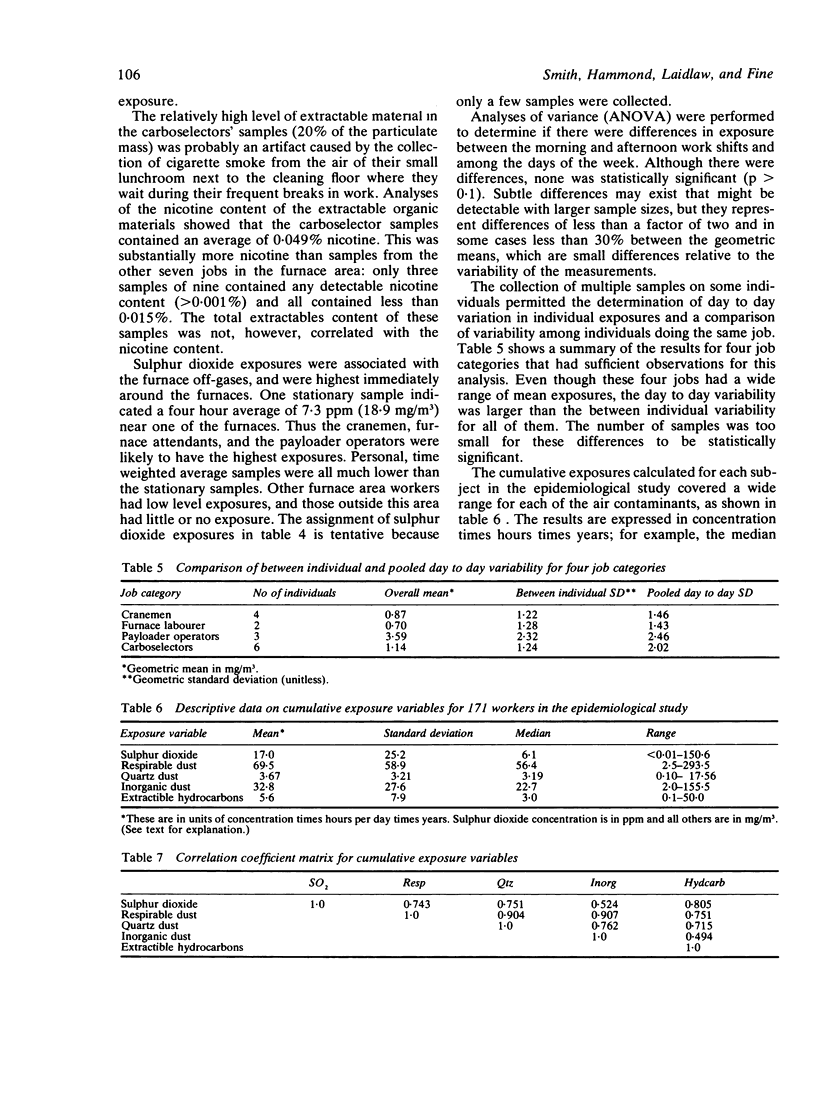

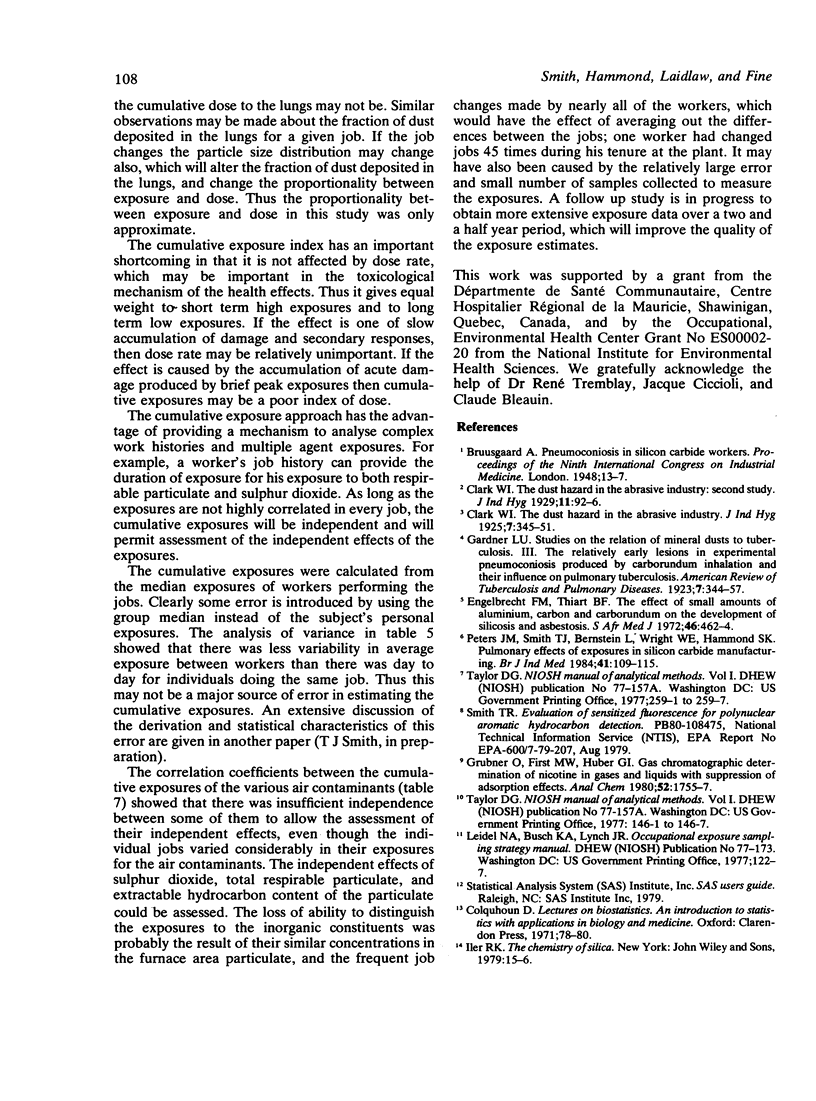
Selected References
These references are in PubMed. This may not be the complete list of references from this article.
- Engelbrecht F. M., Thiart B. F. The effect of small amounts of aluminium, carbon and carborundum on the development of silicosis and asbestosis. S Afr Med J. 1972 Apr 15;46(16):462–464. [PubMed] [Google Scholar]
- Grubner O., First M. W., Huber G. L. Gas chromatographic determination of nicotine in gases and liquids with suppression of adsorption effects. Anal Chem. 1980 Sep;52(11):1755–1758. doi: 10.1021/ac50061a049. [DOI] [PubMed] [Google Scholar]
- Peters J. M., Smith T. J., Bernstein L., Wright W. E., Hammond S. K. Pulmonary effects of exposures in silicon carbide manufacturing. Br J Ind Med. 1984 Feb;41(1):109–115. doi: 10.1136/oem.41.1.109. [DOI] [PMC free article] [PubMed] [Google Scholar]


